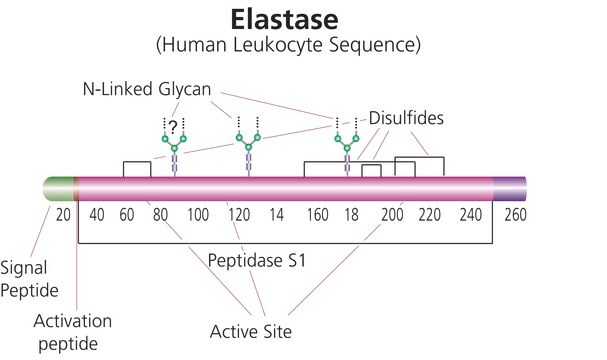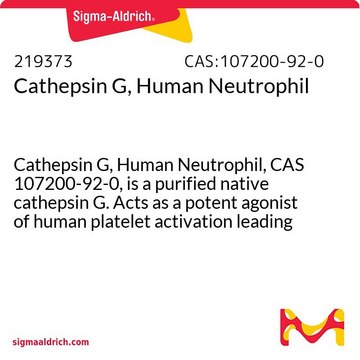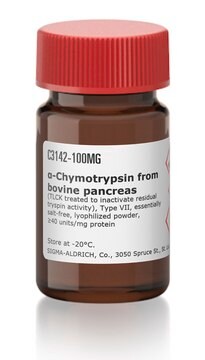E0258
Elastase from porcine pancreas
Type IV, Protein 50-90 %, lyophilized powder, ≥4.0 units/mg protein (biuret)
Synonyme(s) :
Elastase from hog pancreas, Pancreatopeptidase E
About This Item
Produits recommandés
Source biologique
Porcine pancreas
Niveau de qualité
Type
Type IV
Forme
lyophilized powder
Activité spécifique
≥4.0 units/mg protein (biuret)
Composition
Protein, 50-90%
Activité étrangère
trypsin ≤50 BAEE units/mg protein
Température de stockage
−20°C
Vous recherchez des produits similaires ? Visite Guide de comparaison des produits
Description générale
Application
- to treat vero cells to study its effects on syncytium formation
- as a positive control in protease assays
- as a component in RPMI 1640 to isolate human aortic smooth muscle cells (HASMCs) from the aortic tissue
Actions biochimiques/physiologiques
Conditionnement
Définition de l'unité
Forme physique
Notes préparatoires
Application
Inhibiteur
Mention d'avertissement
Danger
Mentions de danger
Conseils de prudence
Classification des risques
Eye Irrit. 2 - Resp. Sens. 1 - Skin Irrit. 2 - STOT SE 3
Organes cibles
Respiratory system
Code de la classe de stockage
11 - Combustible Solids
Classe de danger pour l'eau (WGK)
WGK 3
Point d'éclair (°F)
Not applicable
Point d'éclair (°C)
Not applicable
Faites votre choix parmi les versions les plus récentes :
Déjà en possession de ce produit ?
Retrouvez la documentation relative aux produits que vous avez récemment achetés dans la Bibliothèque de documents.
Les clients ont également consulté
Protocoles
Enzymatic Assay of Elastase (EC 3.4.21.36), a continuous spectrophotometric rate determination.
Chromatograms
application for HPLCNotre équipe de scientifiques dispose d'une expérience dans tous les secteurs de la recherche, notamment en sciences de la vie, science des matériaux, synthèse chimique, chromatographie, analyse et dans de nombreux autres domaines..
Contacter notre Service technique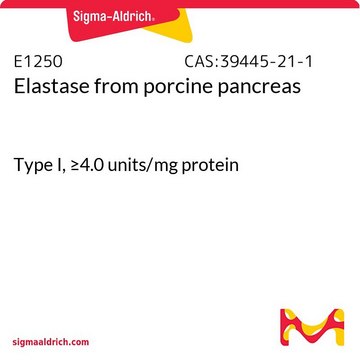
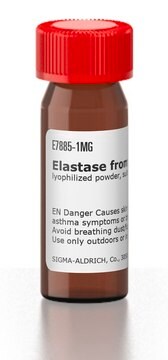

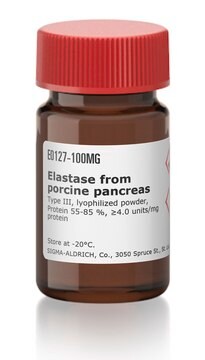



![N-[3-(2-Furyl)acryloyl]-Leu-Gly-Pro-Ala](/deepweb/assets/sigmaaldrich/product/structures/805/876/96b5fb57-71c8-4c6b-b5d2-fafe7374cd85/640/96b5fb57-71c8-4c6b-b5d2-fafe7374cd85.png)
